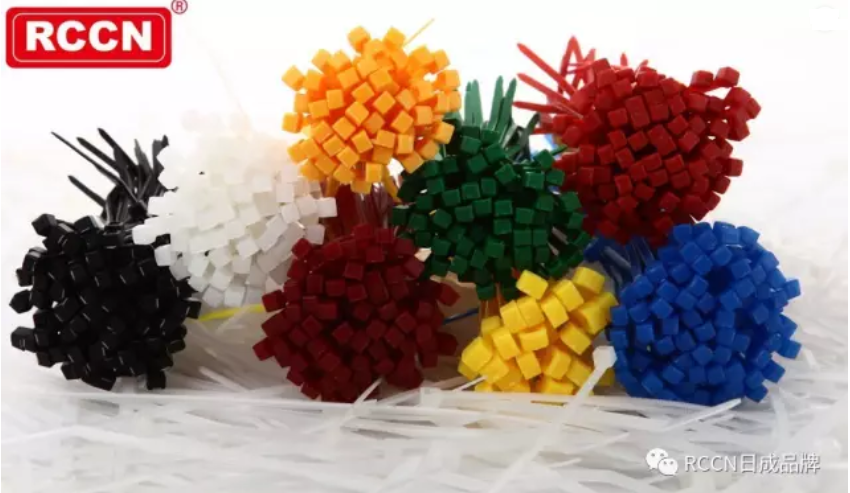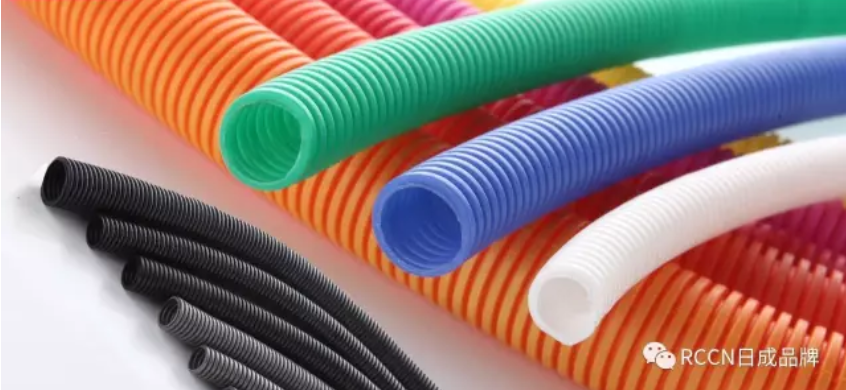Classification and characteristics of nylon
Polyamide fiber, commonly known as nylon (Nylon), English name Polyamide (referred to as PA), density 1.14g/cm3, is a general term for thermoplastic resins containing repeating amide groups - [NHCO] in the main chain of the molecule, including aliphatic PA, fat - Aromatic PA and aromatic PA.
Among them, aliphatic PA has many varieties, large yield and wide application, and its name is determined by the specific carbon number of the synthetic monomer. Invented by the famous American chemist Carothers and his research team.
Nylon classification
1. According to the carbon number of diamine and dibasic acid, nylon synthesized from two monomers: PA46, PA66, PA610, PA612, PA1010, etc.
2. Named according to the number of carbon atoms contained in the monomer: nylon PA6, PA11, PA12, etc.
characteristic
1. Nylon has excellent toughness, self-lubricity, wear resistance, chemical resistance, gas permeability, oil resistance, non-toxicity and easy coloring, so nylon is widely used in industry. High impact strength of nylon (higher than ABS, POM but lower than PC). The heat distortion temperature is low, the hygroscopicity is large, and the dimensional stability is poor.
2. The most commonly used PA66 has a strong structure in nylon materials, and PA6 has the best processing performance.
Nylon process characteristics
1. Rheological properties of nylon
Most of the nylon is a crystalline resin. When the temperature exceeds its melting point, the melt viscosity is small and the melt fluidity is excellent, and the overflow should be prevented. At the same time, due to the fast condensation speed of the melt, it should prevent the material from clogging nozzles, runners, gates, etc., causing insufficient products. The mold overflow value is 0.03, and the melt viscosity is sensitive to temperature and shear force changes, but is more sensitive to temperature. Lower the melt viscosity first from the barrel temperature.
2. Nylon water absorption and drying
Nylon has a large water absorption property. During the molding process, the wet nylon exhibits a sharp drop in viscosity and a silver wire appears on the surface of the bubbled product, and the mechanical strength of the obtained product is lowered, so the material must be dried before processing.
3. Crystallinity
In addition to transparent nylon, nylon is mostly crystalline high polymer, high crystallinity, product tensile strength, wear resistance, hardness, lubricity and other properties have improved, thermal expansion coefficient and water absorption tend to decrease, but for transparency and The impact resistance is disadvantageous.
The mold temperature has a great influence on the crystallization, the mold temperature is high, the crystallinity is high, and the mold temperature is low and the crystallinity is low.
4. Shrinkage rate
Similar to other crystalline plastics, nylon resin has a large shrinkage problem. Generally, nylon shrinkage has the largest relationship with crystallization. When the crystallinity of the product is large, the shrinkage of the product will also increase, and the mold temperature is lowered during the molding process. \Reducing the material temperature will reduce the shrinkage, but the internal stress of the product will increase and deform easily. For example, the non-glass fiber reinforced PA6 and PA66 shrinkage rate is 1.5-2%, and the shrinkage rate can be reduced to 0.3%~0.8% after adding glass fiber. .
5. Molding equipment
When molding nylon, the main thing is to prevent the "flowing phenomenon of the nozzle". Therefore, the self-locking nozzle is generally used for the processing of nylon material. In addition, it is best to choose an injection molding machine with a moderately large plasticizing capacity.
6. Products and molds
Wall thickness of the product
The flow length ratio of nylon is between 150-200. The wall thickness of nylon products is not limited to 0.8mm, generally between 1-3.2mm, and the shrinkage of the product is related to the wall thickness of the product. The thicker the wall thickness, the larger the shrinkage. .
exhaust
The overflow value of the nylon resin is about 0.03 mm, so the vent hole should be controlled to be 0.025 or less.
Mold temperature
The product wall is difficult to form or requires high mold temperature heating control. The product is required to have a certain flexibility and is generally controlled by cold water. The flow path and gate gate aperture should not be less than 0.5*t (where t is the thickness of the plastic part). With a submerged gate, the minimum diameter of the gate should be 0.75mm
 Nylon injection molding process
Nylon injection molding process
Barrel temperature
Since nylon is a crystalline polymer, the melting point is obvious. The temperature of the cylinder selected by the nylon resin during injection molding is related to the properties of the resin itself, the shape of the equipment, and the shape of the product.
Excessive material temperature tends to cause discoloration, brittleness and silver filaments, while too low a material temperature makes the material hard and can damage the mold and the screw. Generally, the melt temperature of nylon 6 is at least 220 ° C, and nylon 66 is 260 ° C. Due to the poor thermal stability of nylon, it is not suitable for high temperature to stay in the barrel for a long time, so as to avoid discoloration and yellowing of the material. At the same time, because of the good fluidity of nylon, the temperature flows rapidly after the temperature exceeds its melting point.
Injection pressure
Nylon solution has low viscosity and good fluidity, but the condensation speed is fast. It is easy to be insufficient in products with complicated shape and thin wall thickness, so it still needs high injection pressure, especially glass fiber.
Usually the pressure is too high, the product will have overflow problems; if the pressure is too low, the product will produce ripples, bubbles, obvious weld marks or insufficient products. The injection pressure of most nylon varieties does not exceed 120MPA, generally 60-100MPA. The selection within the range is to meet the requirements of most products. As long as the product does not have defects such as bubbles and dents, it is generally undesirable to use a higher pressure holding pressure to avoid an increase in stress in the product.
Injection speed
For nylon, the injection speed is fast, and it can prevent the ripple caused by the slow cooling rate and the problem of insufficient filling. The effect of fast injection speed on the performance of the product is not outstanding.
Mold temperature
The mold temperature has a certain influence on the crystallinity and the molding shrinkage rate. The high mold temperature has high crystallinity, wear resistance, hardness, elastic modulus, water absorption, product molding shrinkage, and is suitable for thick products; low mold temperature Low crystallinity, good toughness, high elongation, and reduced shrinkage, suitable for thin products with good transparency. If the wall thickness is greater than 3mm, it is recommended to use a low temperature mold of 20~40C. For glass reinforcement the mold temperature should be greater than 80C.
Nylon processing precautions
1. Use of recycled materials
It is best not to exceed three times, so as to avoid causing discoloration of the product or a sharp drop in mechanical physical properties. The application amount should be controlled below 25%. Too much will cause fluctuations in the process conditions, and the recycled material must be dried when mixed with the new material.
2, safety instructions
When the nylon resin is turned on, the nozzle temperature should be turned on first, then the feed cylinder should be warmed. When the nozzle is blocked, avoid facing the nozzle hole to prevent the melt in the cylinder from being suddenly released due to pressure accumulation, which is dangerous.
3, the use of release agent
The use of a small amount of release agent sometimes has an effect of improving and eliminating defects such as bubbles. The release agent of the nylon product may be selected from zinc stearate and white oil, or may be mixed into a paste, and the amount of the release agent may be small and uniform during use to avoid surface defects of the product.
4. Empty the screw during shutdown to prevent the screw from breaking during the next production.
The post-treatment of nylon products for post-treatment of nylon products is to prevent and eliminate residual stress in the product or dimensional changes caused by moisture absorption. The post-treatment methods include heat treatment and humidity control.
Heat treatment
Commonly used methods in high-boiling liquids such as mineral oil, glycerin, liquid paraffin, heat treatment temperature should be higher than the use temperature of 10-20 ° C, the treatment time varies depending on the wall thickness of the product, the thickness is less than 3mm for 10-15 minutes, the thickness is 3 The -6mm time is 15-30 minutes. The heat-treated product should be slowly cooled to room temperature to prevent quenching and cause stress re-generation in the product.
2. Humidity treatment
The humidity control treatment is mainly carried out on products using a large ambient humidity, and there are three methods: a boiling water conditioning method; 2. a normal temperature water immersion method. 3. A steam method.
The first method is faster, but is more susceptible to supersaturation. The third method is more efficient and uniform, but requires a steam unit.
Common defects and treatment of nylon products
Under-injection - unstable injection pressure
Generally, this situation is related to the fact that the nozzle hole of the injection molding machine is too small, because the nozzle is in contact with the mold for a long time, the mold temperature is very low at 20-90 ° C, and the nozzle temperature is 240-280 ° C. The temperature difference between them will inevitably lead to heat exchange. When the temperature of the nozzle drops below the melting point of nylon, the nozzle hole is frozen, and the large pressure is opened at the next injection, causing the pressure loss to be unsatisfactory, but this When the injection pressure is increased, the mold will be increased after several molds are produced.
From the phenomenon, the injection molding machine is unstable in injection molding. In fact, the nozzle hole is too small, and the phenomenon of increasing the nozzle hole will disappear.
For example, PA POM ABS materials can cause this problem.
Wavy flow marks
The mechanism is that the flow rate of the rubber in the cavity is too slow, and the frozen rubber has no way to adhere to the mold.
Solution:
1. Increase the injection speed;
2. Increase the mold temperature;
3. Increase the temperature of the barrel;
4. Appropriately increase the nozzle aperture or gate.
Silver wire
The mechanism is that there is a gas in the plasticized material, and the gas is forcibly pressed out on the surface of the mold during injection, and a white silk pattern appears on the surface of the product.
Solution:
1. Check if the raw materials are wet or mixed with other raw materials;
2. Check whether the raw material is decomposed in the barrel (the temperature of the barrel is too high and the screw speed is too fast);
3. Check if the nozzle hole is too small;
4. Check if the mold temperature is too low;
5, the mold is poorly exhausted;
6. Is the gate size too small;
7. The back pressure is too low and the recycled material is applied too much.
Weld Line
The mechanism of production is that the temperature at the end of the flow is very low, and the poorly coupled pressure is weak, so that the two streams are not tightly coupled.
Solution:
1. Increase injection pressure and speed;
2. Increase the mold temperature;
3. Increase the material temperature;
4. Improve mold exhaust.
















 RCCN WeChat QrCode
RCCN WeChat QrCode Mobile WebSite
Mobile WebSite


